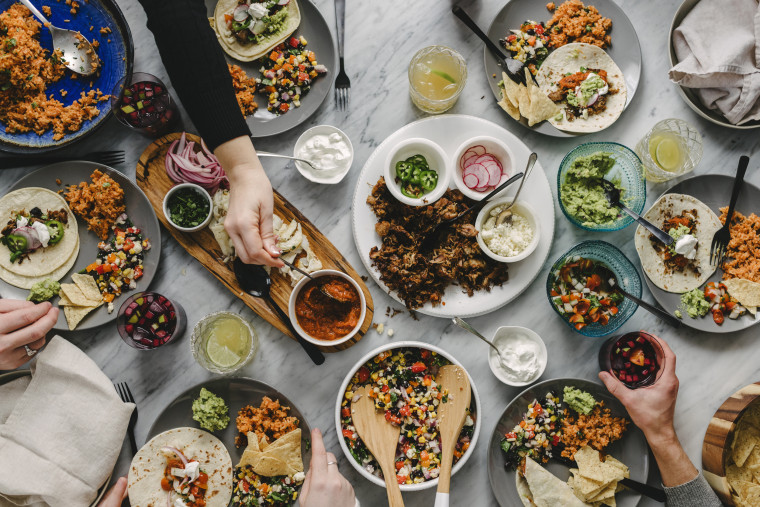Did you recognize that the chili you companion with regular ‘Mughlai’ food wasn’t commonplace in the royal Mughal kitchen? And did we learn the artwork of cooking on skewers from the Muslim rulers? Food historian and author Salma Yusuf Husain, who has spent an entire life analyzing Indian food, lately translated Shah Jahan’s cookbook, Nuskha-e-Shahjahani, from Persian to English for The Mughal Feast (Roli Books). We chat with the writer about the finer nuances of the royal Mughal kitchen.
When changed into the original Nuskha-e-Shahjahani compiled, what changed its reason?
The handwritten Persian manuscript does not use the date of compilation or the call of the compiler. However, it suggests that it was compiled during Emperor Shah Jahan’s reign, possibly by one of the cooks in his royal kitchen.
What changed in the method of translating the book?
My knowledge of Persian and my capacity to study manuscripts helped me translate this cookbook.

What are some of the essential strategies and ingredients you observed in this cookbook, which has now emerged as mainstream in India?
Cooking on dum or what’s called dum pukht, sluggish cooking, smoking, making yakhni, mixing meat, and shaping it on skewers—all of those are techniques we learned from the Mughals. The Muslims’ advent in India between the tenth and 11th centuries resulted in an awesome fusion of culinary traditions. With Indian, Mesopotamian, Persian, and Middle Eastern delicacies, culinary artwork reached its highest sophistication underneath the Mughals.
Moghul emperors had also ended up particularly Indianised, and this e-book includes recipes that deliver mild to that truth. With time, Indian dishes and components have been used to create one-of-a-kind flavors. Recipes like bharta, poori, khichdi, besan roti, and sweetmeats spotlight these elements. Betel leaves, mustard oil, mishri, Multani mitti, mahua, and Indian culmination are a few examples of Indian ingredients used in their cooking.
Is there no point in chili? Is there any other mainstream Indian substance that has been used at some point during this time?
There is no point in chili, even though he came here later in Jahan’s reign. It took longer to be used in culinary delights. There is infrequent mention of garlic and turmeric, too.
How do you believe you studied Mughals and modified the face of Indian cuisine?
Mughals introduced a rich gastronomic history to India with them, and this impact is now an exciting part of our food tradition. They added fashion and substance to India’s simple food, making it distinctive and making cooking an art–using nuts and saffron, for example. Similarly, using culmination in cooking added a unique flavor. Apart from this, their hospitality changed into something legendary. They have left at the back of a legacy of food that stays alive even after centuries.
Ahead, Husain stocks some of the recipes from her new book.
Zeer Bryan Paneer (rice with cottage cheese and green gram)
Serves: six to 8
Ingredients
Rice, four cups (1kg)
Cottage cheese (paneer), one cup or 250gm, reduce into ¾ cubes
Wholewheat flour (atta), eight tsp or 40gm
Salt, 8 tsp or forty gm
Yogurt (dahi), ½ cup or 125gm, hung and whisked
Saffron (Kesar), 1.5gm, dissolved in water
Green cardamoms (Choti elaichi), ½ tsp or 3gm, overwhelmed
Onions, ½ cup or 125gm, sliced
Ginger (adrak), four tsp or 20gm, overwhelmed
Cinnamon (dalchini), ½ tsp or 3gm
Cloves (lung), ½ tsp or 3gm
Black peppercorns (sabut kali mirch), 1.5gm, floor
Ghee, 1½ cups or 375gm
Green gram (scholia), ½ cup or 125gm, fresh and washed
Flat bamboo sticks as needed
Method
1
Mix the wheat flour and salt with water in a bowl to make a thick batter. Cover the cottage cheese pieces with this batter and deep fry till golden brown. Keep aside.
2
Mix the whisked yogurt with the saffron and 1/2 of the finely overwhelmed cardamom seeds. Apply this combination over the fried cottage cheese portions
3
Take a wide, thick-bottomed pan and set up flat bamboo sticks in a criss-cross manner at the lowest.
4
Remove the cottage cheese pieces from the yogurt combination and place them over the bamboo sticks. Then, place the onion slices, ginger, cinnamon, cloves, floor pepper, and ¾ cups of ghee over the cottage cheese pieces.
5
Parboil the rice and spread it over the cottage cheese portions. If the rice is a little confusing, sprinkle two tablespoons of water to make it gentler. Color some rice with saffron and put it on one side of the pan.
6
Spread the green gram over the rice.
7
Heat ¾ cups of ghee to smoking point and pour it over the rice. Place one cup of wheat flour on top of the rice, cowl, and seal the pan.
8
Place charcoal on the pan’s duvetand place it on dum for 5 minutes.




